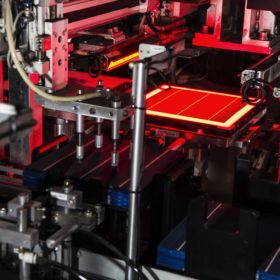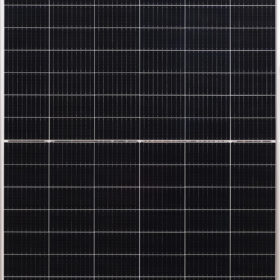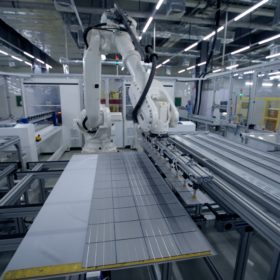Vikram Solar ranks as PVEL top performer for fifth time
Indian solar manufacturer Vikram Solar has been listed as a top performer in PV Evolution Labs (PVEL) PV Module Reliability Scorecard 2022 for its half-cut-cell, multi-busbar bifacial PV modules.
Adani Solar ranks as PVEL top performer for fifth consecutive year
Indian solar manufacturer Adani Solar has been ranked as a top performer in PV Evolution Labs’ (PVEL) 2022 PV Module Reliability Scorecard. The scorecard ranks PV modules based on lab and field test results for performance and reliability.
The long read: The impact of dust on solar panels matters
Anil Kottantharayil currently leads the Centre for Research in Nanotechnology and Science, as well as the Sophisticated Analytical Instrument Facility, at the Indian Institute of Technology (IIT) Bombay. He works on high-efficiency crystalline silicon solar cells, the impact of dust on solar panels, and the long-term reliability of photovoltaic modules.
Where the ALMM listing requirement went wrong for India’s solar mission
The idea behind introducing the Approved List of Models and Manufacturers (ALMM) was to have a quality benchmark for solar modules. However, in its current form, it is more of a non-tariff barrier for foreign manufacturers and limits solar developers in terms of the choice of module wattage and make.
Solar photovoltaic quality control and waste management in India
As PV waste is set to rise rapidly in the coming decades, India needs to invest in efficient recycling technologies and devise a clear-cut policy for the safe disposal of PV waste. Guidelines for stringent quality checks and validation for both imported and locally produced solar panels are also needed to avoid early-loss solar waste.
Vikram Solar top PVEL performer for third consecutive year
The Indian solar manufacturer’s Series 6 module exceeded the international quality and performance benchmarks in testing under PV Evolution Labs’ Product Qualification Program.
Adani Solar top performer for fourth consecutive year
Adani Solar has received the Top Performer title for the fourth consecutive year for its high-efficiency modules by PVEL – the world’s largest resource of independent energy experts.
AI identifies a $14bn solar problem
How do you know when an inverter or module is under-performing? Monitoring services should shed light on problems but AI-driven digital asset manager Raycatch says much information is hidden behind a wall of “noise.” Breaking that wall with advanced data analysis could unlock billions of cost savings.
Mitsui Chemicals’ Gujarat lab now BIS-recognized for solar panel testing
The Japanese firm, which established the lab in association with Germany-headquartered technical advisor PI Berlin, eventually plans to set up a diagnostic business for solar panels and power plants in India.
Waaree’s solar module testing lab becomes NABL accredited
The lab—located at Waaree’s factory in Gujarat—is the first such by an Indian module manufacturer and can perform more than 30 critical IEC tests.













